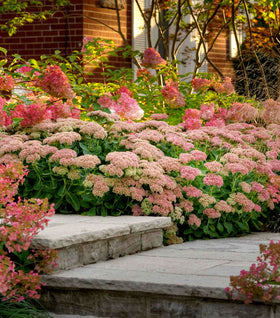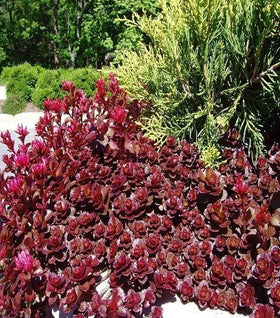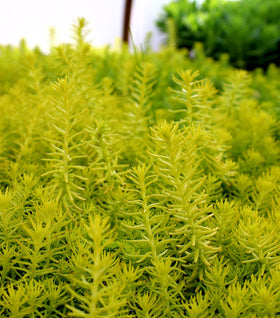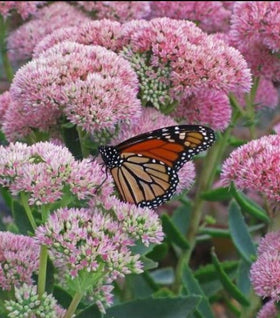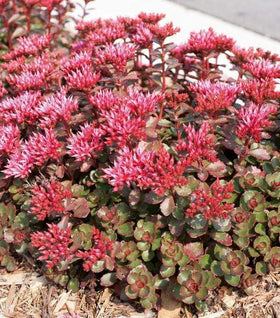Sedum Plants For Sale Online
Sedum, or Stonecrop, are tough, hardy perennial plants are known for their distinctive fleshy foliage and drought tolerance. Clusters of tiny star-shaped flowers often change color throughout their bloom time.
Sedum thrive in the hot, full sun but tolerate some shade. They are considered succulent plants and can store water in their fleshy leaves. Stonecrops come in many forms, from upright varieties to low-growing ground cover types.
Types of Sedum Plants:
Choose between upright sedum and creeping groundcover sedums. The tall sedums like Sedum Autumn Joy or Sedum Autumn Fire have upright stems that grow from 1 to 3 feet tall, depending on variety and conditions.
The creeping sedums like Dragons Blood Sedum or Sedum Angelina are a wildly variable group with long narrow stems that form mats of colorful foliage. Traditionally, creeping sedums are grown for their colorful foliage or draping form, which softens the edge of patio containers. Although not typically grown for flowers, creeping sedums do produce attractive sprays of flowers.
Using Sedum Plants in the Landscape
Sedums are an easy perennial plant for even novice gardeners to grow. They are very low maintenance, requiring virtually no pruning to shape. They make excellent cut flowers, attract butterflies and pollinators, and are a great addition to any landscape.
Most sedums like to be planted in full sun, but some low-growing sedum groundcover varieties can tolerate up to part shade. Avoid planting sedum varieties next to larger bushes that can block sun exposure. Smaller ground cover varieties of sedum can be grown in a pot and used as a "spiller" in mixed containers to soften the edge of the pot.
Because of their drought tolerance, many types of sedums are used in xeriscape gardening. Xeriscaping is a type of gardening in which the landscape is designed to thrive with little to no additional water other than what nature provides. Sedums also do well in rock gardens and will cascade over the sides of rock or stone borders.
Due to their versatility, sedums can be used to fill in gaps where other plants won't grow or where mowing is difficult or impossible such as on rocky hillsides. It looks great when planted in mass plantings along hillsides or slopes.
As far as flowers go, sedum flowers are multipurpose. Bees and butterflies love the flowers, making this plant perfect for pollinator gardens. The dried bloom stems add winter interest to the garden on taller blooming varieties as the flower heads naturally dry and stay atop the strong stems. Be sure to remove the prior year's growth early in the spring before new growth emerges to keep the plant looking its best.
Planting Companions for Sedums:
Dwarf Fountain Grass: These grasses pair well with sedums due to their short size. They won't overtake and hide the sedums, and their dark green foliage highlights the soft pink flowers of sedums.
Black-eyed Susan: Rudbeckias pair well with sedums due to flowering time. They flower at a similar time, and the golden yellow flowers are toned down a bit by the soft pink flowers of sedums.
Salvia: Salvias like to grow in dry soils, making them perfect companions for the drought-loving sedum.
Daylilies: Daylilies also share the bloom time with sedums, and again the pink flowers pair well with many varieties of daylilies.

